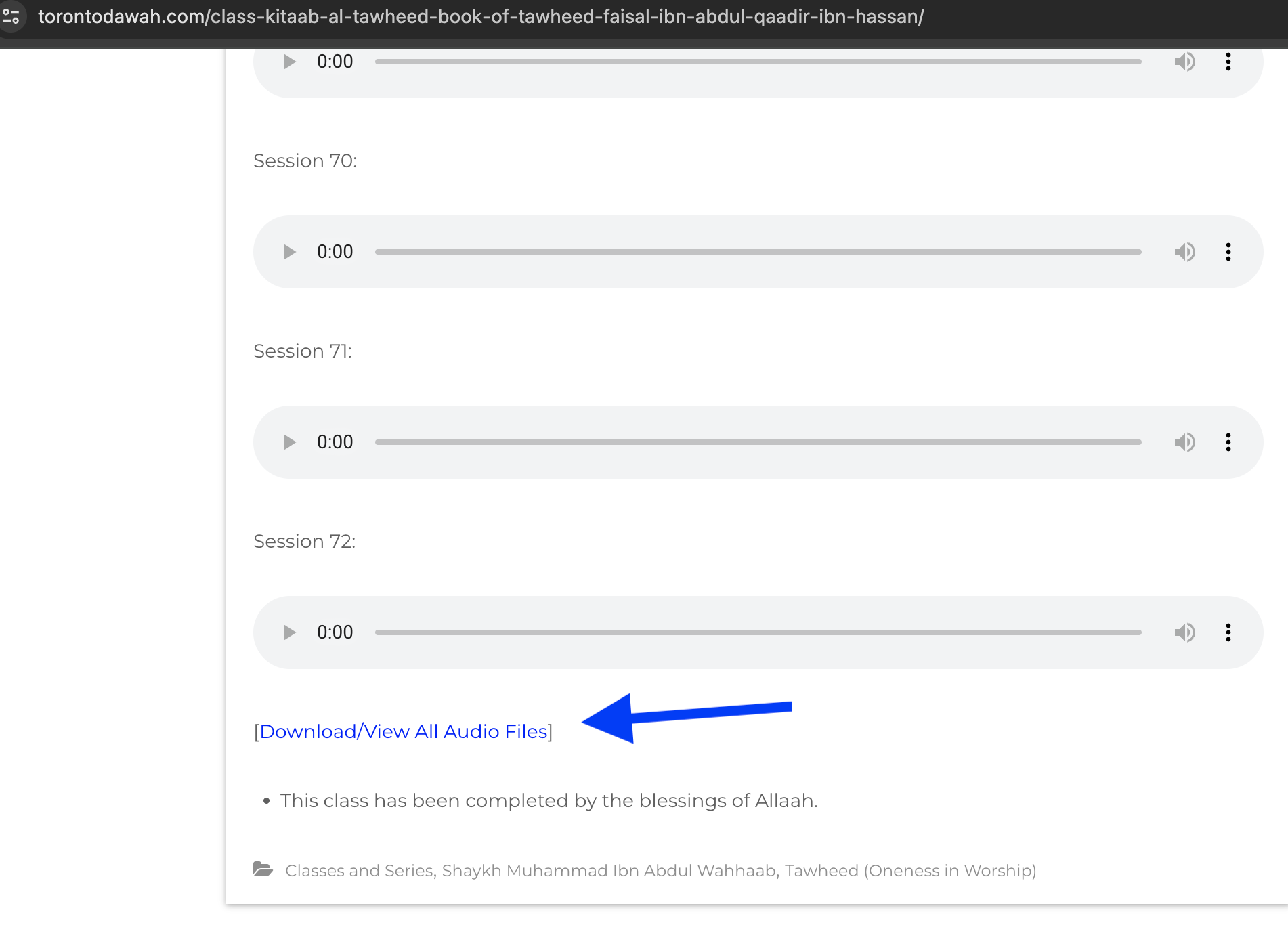Condition: is regarding that which is not within the prayer; the prayer is
not valid except through means such as purification from a major or minor
impurity.
Pillar: From what is within the prayer which is an essential part
of the prayer such as reading Faatihah.
Waajibaat: If one abandons it, he is in sin and his prayer is not invalid
on the correct opinion such as saying the Thikr when rising from
Rukoo’.
Brief Notes:
- Due to this treatise grasping many important aspects of the prayer,
many scholars have shown great attention to it, from them is
Ash-Shaykh Bin Baaz and Ash-Shaykh Muhammad Amaan al-Jaami and
Ash-Shaykh Abdul Muhsin Al-Abaad and others. However, the best of
explanations so far from what I have seen is sharh Ash-Shaykh Muhammad
Amaan al-Jaami since he side-tracks the listener to matters which
will in reality expand the listener’s understanding of different
aspects of the prayer. - The author Al-Imam Muhammad bin AbdulWahaab was on the mathhab of
Imaam Ahmad, may Allah have mercy upon him. And he was one who would
search for the proof even if it was found in other than the mathhab
of Imam Ahmad. - Some scholars have mentioned that usually this treatise is taught
before the book ‘The etiquettes of walking to the prayer’ by the same
author. - The hadeeth ’Pray as you seen me praying’ is not applied unless the
servant performs all conditions, pillars, and obligatory acts. - This treatise includes of the conditions of wudhu (ablution), its
obligatory acts and its nullifications. - The first thing a person will be taken account for is the prayer,
so let him perfect it, for verily it is the second pillar of Islam. - Ash-Shaykh al-Uthameen, may Allah have mercy upon him, mentioned
that if the prayer (intentionally) falls short in performing the
conditions, pillars, and obligatory acts then he has not feared Allah. - Affirming the conditions of the prayer is only by proofs from the
Book of Allah or the Sunnah which indicate the prayer is not accepted
except with it [i.e. the conditions being based upon the proofs from the Qur’aan and Sunnah]. - Some have mentioned that the conditions are actually six because
the condition of Islam, sanity and tamyeez (i.e. maturity, or a level
comprehension which usually takes place at the age of seven) are
general conditions which are not confined to the prayer. However, they
are conditions for all acts of worship. - The author mentioned the numbers of conditions of the prayer at
the beginning of the treatise and then generally explained each
condition with its proof briefly. - The correct opinion is that ‘covering the awrah’ is not a condition. Rather, it is an obligatory act wherein if a person were to abandon it, he would
be sinful and his prayer is not invalid, as Ash-Shaykh Albaani
mentioned in the book al-Thamar al-Mustataab. - The correct opinion is that ‘removing impurity and filth from one’s
body, clothing, and prayer area’ is not from the conditions. Rather, it is from the waajibaat of the prayer, as Ash-Shawkaani mentioned.
Mentioned by
AbdulFattaah bin Uthman
Abu Fajr




